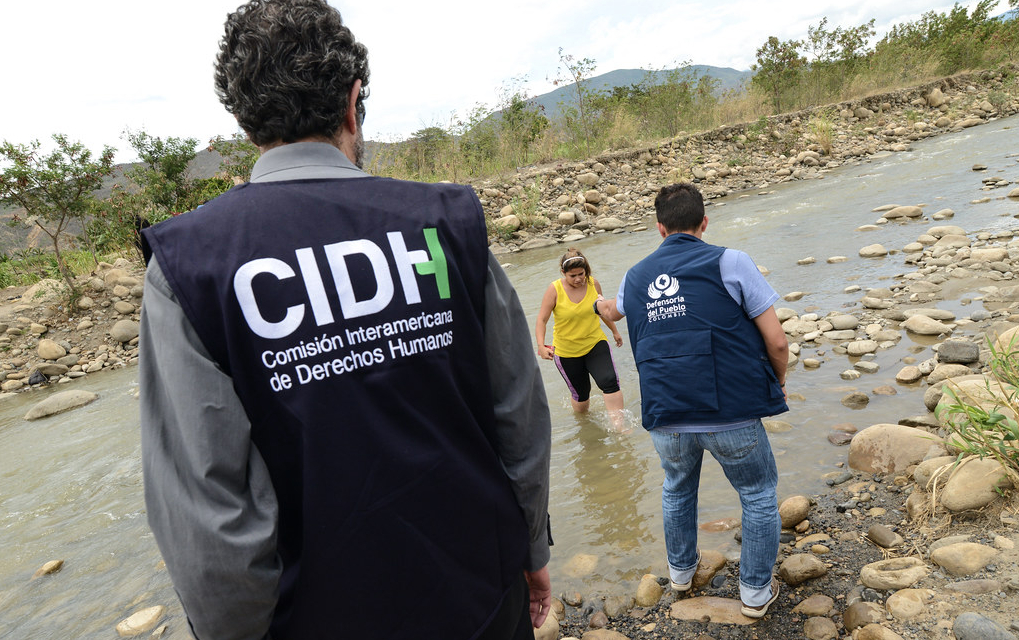The closure of international borders that took place in much of the world to contain the VOC-19 pandemic brought with it economic and social consequences that affected the world’s population in many ways. Within this framework, women, girls and migrants are the most vulnerable groups and, therefore, the most exposed to insecurity and criminal violence.
Although this was a growing trend, according to the latest annual reports of the United Nations Office for Drugs and Crime (UNDOC), the arrival of COVID-19 produced a significant increase in human trafficking for sexual exploitation, as well as in the trafficking of migrant women and girls throughout the region.
In times of health emergency, border violence -militarization, insecurity in crossing zones, or gender violence- together with the dynamics of internal and/or local recruitment, -perpetrated by gangs with different degrees of organizational complexity- are the most evident manifestations of human commodification through trafficking and smuggling. This has been fueled, in turn, by the worsening of a complex socio-economic crisis that existed in most Latin American countries.
Violent borders in the Southern Cone
Violence in its various forms is a structural phenomenon in Latin America. With 8% of the world’s population, the region is one of the most violent in the world, home to 41 of the 50 cities with the highest homicide rates globally. Within this framework, borders play a key role in criminal violence, which in most cases is the result of organized crime interactions.
Because they are spaces that are scarcely monitored by the states, border regions are focal points for criminal violence. There, different types of transnational crime converge, such as drug trafficking or the smuggling of weapons, wildlife or people, which tend to be juxtaposed, generating different manifestations and degrees of violence.
According to the Atlas of Violence (2018), Latin America has 36 borders and 155 border crossings, 30 percent of which have epidemic death rates. Several of these are concentrated in Central America (Guatemala-Honduras, Guatemala-El Salvador and El Salvador-Honduras) and in some South American countries, such as those between Colombia and Venezuela, Bolivia and Brazil, Colombia and Ecuador, Venezuela and Brazil, and Paraguay and Brazil.
In all of these cases, border violence is often driven by drug trafficking and the expansion of transnational criminal organizations. These, in turn, converge on the borders, diversifying their illicit profit-making activities through other crimes such as trafficking in persons and smuggling of migrants, especially women.
Some of the most criminally violent borders in South America, including the commerce of people, mostly Venezuelans, to Trinidad and Tobago are the Yellow Delta, human trafficking from Zulia to Colombia, the Aguas Blancas-Bermejo pass in Argentina, or Rumichaca in Colombia. Other cases are the trafficking of women in the Triple Frontier between Argentina, Brazil and Paraguay and the migrant smuggling networks that connect criminal organizations in Venezuela and Trinidad and Tobago with the police and political collusion of both countries.
In this context, migrant women and girls are the main victims of physical and psychological abuse and human rights violations. However, faced with this scenario, the border management policies of the countries involved are often left half way through, or are dysfunctional or even non-existent.
The South American Gap
Irregular migration across international borders is a phenomenon of which little is known. In fact, official statistics – based mostly on the number of arrivals and/or migrants detained at the border – are limited. Because of its nature and dynamics (routes, perpetrators, modus operandi), it is often juxtaposed to the crime of human trafficking, when in fact they are distinct, albeit related, phenomena.
In addition to the limited knowledge, most reports tend to be concentrated in Central America and Mexico, leaving the rest of the region in the background. For this reason, migrant trafficking in South America is a latent phenomenon, but very little known since the actual size of the problem or the level of lethality involved in crossing through clandestine routes is not known. We do not even have reliable knowledge of these routes or the profiles of the victims and facilitators/perpetrators of irregular migration. Therefore, it is necessary to generate greater knowledge about migrant trafficking in South America in order to define comprehensive policies that facilitate cooperation in terms of border security and information exchange, while respecting human rights.
*Translation from Spanish by Emmanuel Guerisoli
Photo by Inter-American Commission on Human Rights on Foter.com / CC BY











